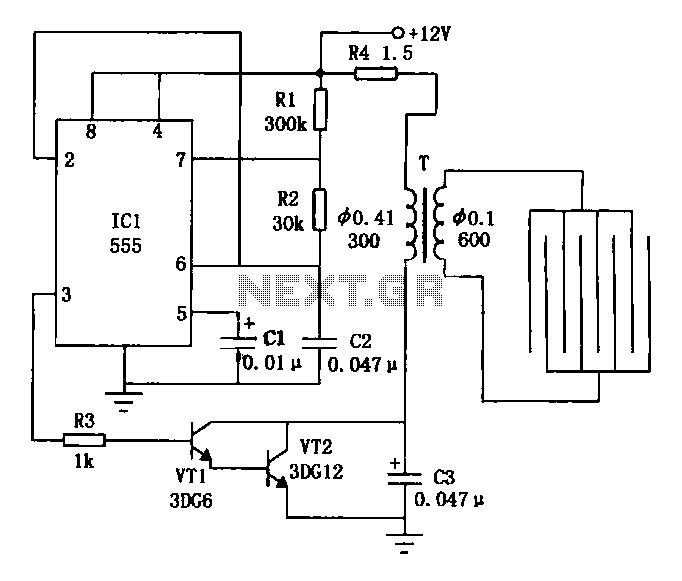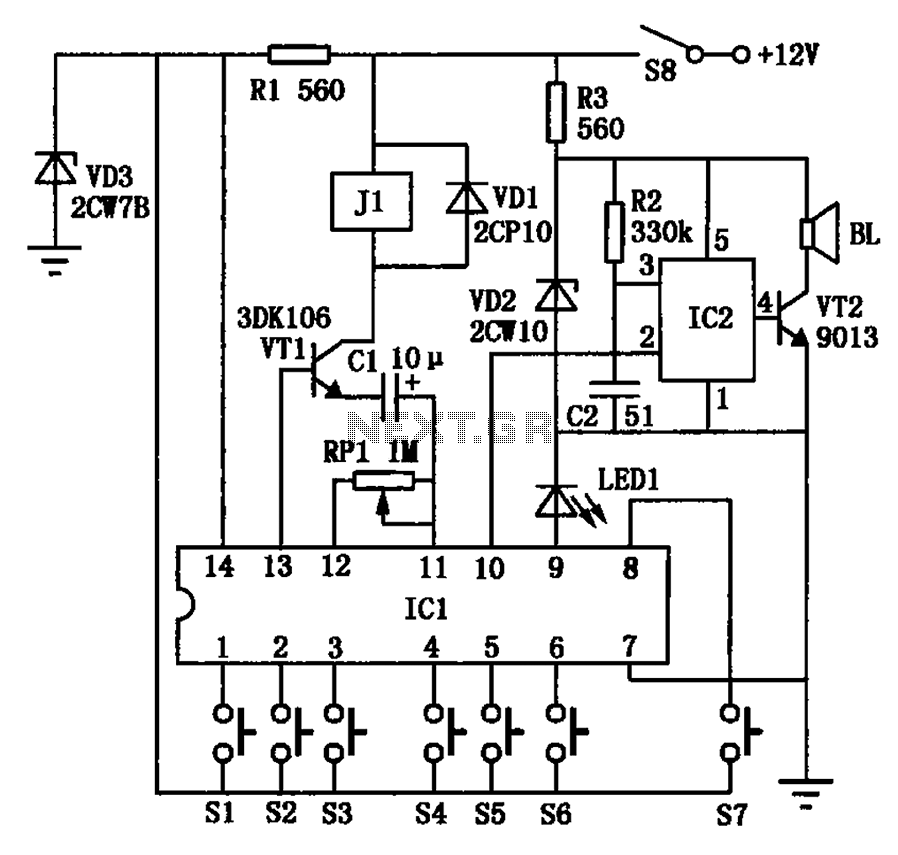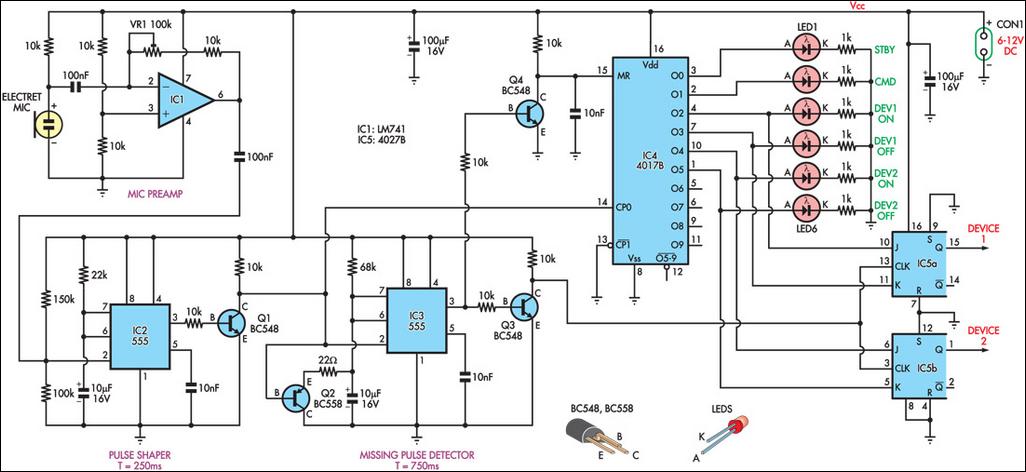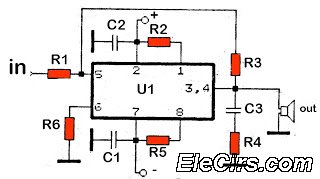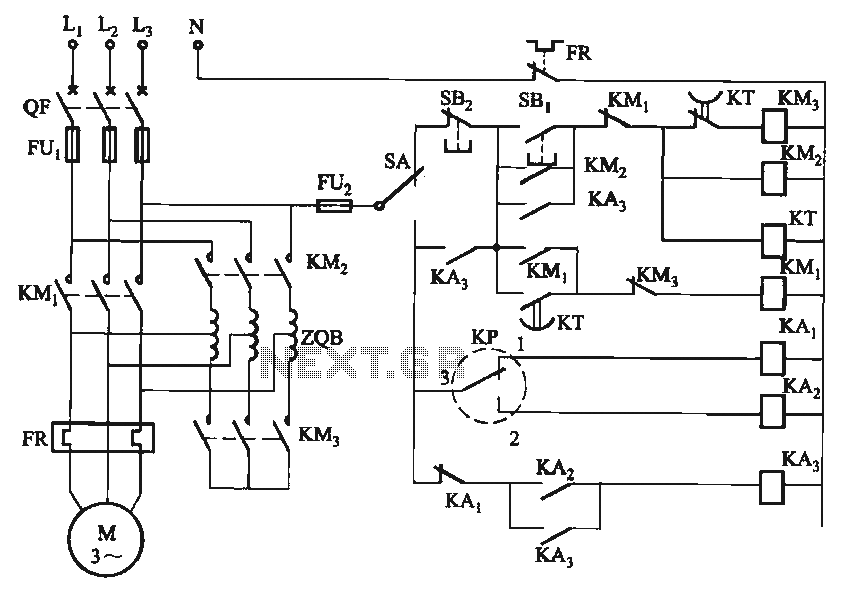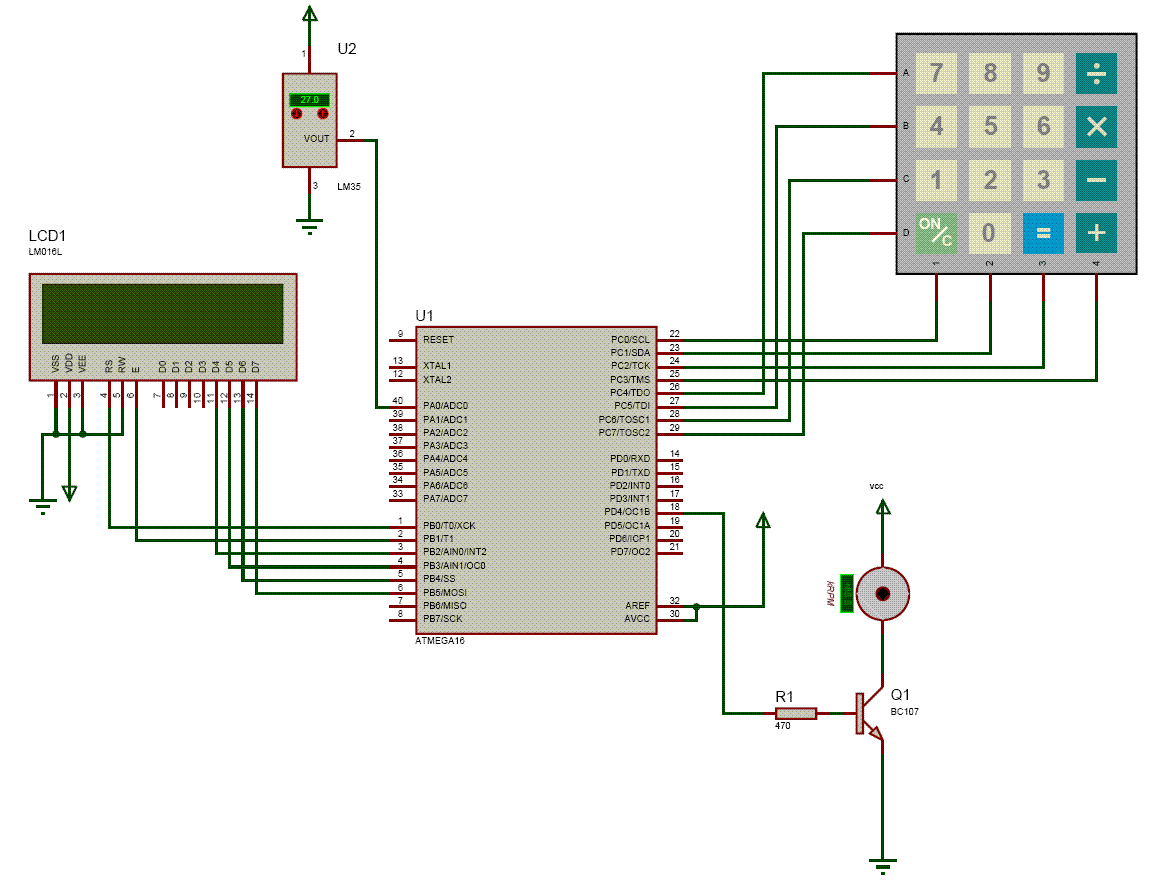
Hidden Tron shirt controlled with a SR Latch
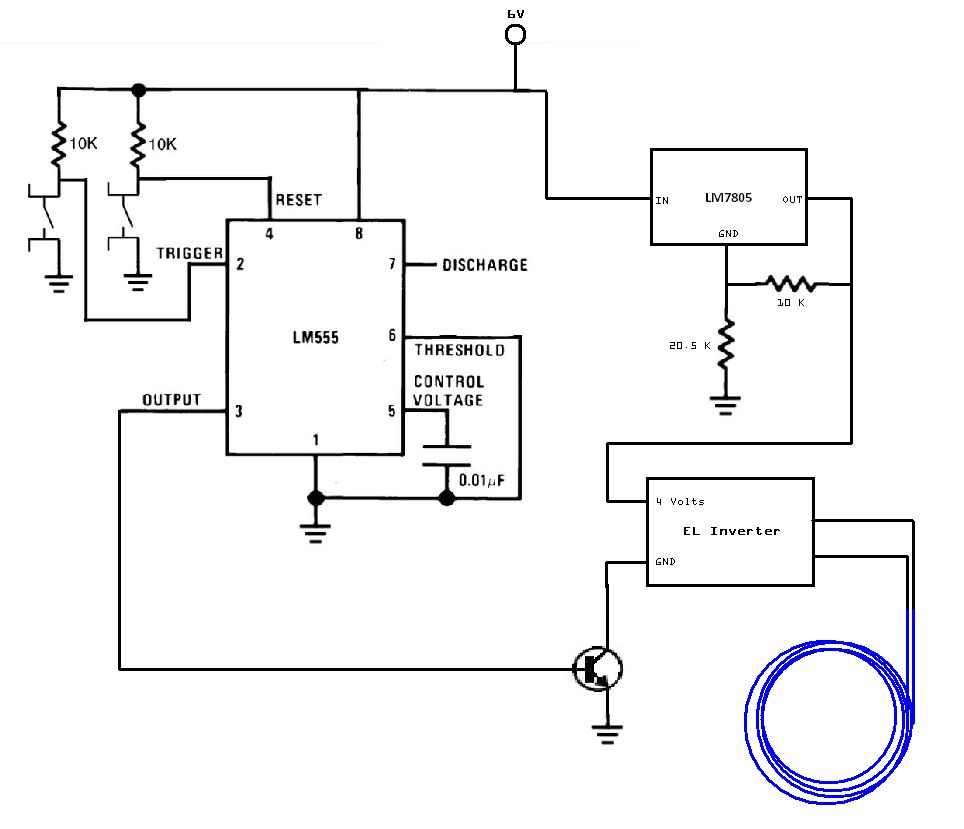
The circuit utilized for this project is quite simple. Some may criticize the omission of decoupling capacitors for the LM7805 voltage regulator.
The circuit in question employs the LM7805 voltage regulator, which is designed to provide a stable output voltage of 5V from a higher input voltage. The LM7805 is a linear voltage regulator that requires a minimum input voltage, typically around 7V to 35V, to function correctly.
In a typical configuration, the input voltage is applied to the input pin of the LM7805, while the output pin delivers the regulated 5V. The ground pin of the regulator connects to the circuit's common ground. It is essential to include adequate input and output capacitors to ensure stability and transient response. A common practice is to use a 0.33μF ceramic capacitor at the input and a 0.1μF ceramic capacitor at the output. These capacitors help filter out high-frequency noise and provide a stable voltage under varying load conditions.
While the original description notes the absence of decoupling capacitors, it is important to highlight that these components can significantly enhance the performance of the regulator by preventing oscillations and improving transient response. In applications where the load may change rapidly, such as digital circuits, including decoupling capacitors close to the load is advisable.
The overall circuit should be designed with careful attention to the layout, ensuring that the input and output connections are as short as possible to minimize inductance and potential noise. Additionally, thermal management should be considered, as the LM7805 may dissipate heat depending on the input voltage and load current. A heatsink may be necessary if the power dissipation exceeds the regulator's thermal limits.
In summary, the circuit leverages the LM7805 voltage regulator to achieve a stable 5V output, and while the basic design is straightforward, the inclusion of decoupling capacitors and attention to layout and thermal management are crucial for optimal performance.The circuit used for this project is really straight forward. Many would likely criticize me that I didn`t use decoupling capacitors for the LM7805 vo.. 🔗 External reference
The circuit in question employs the LM7805 voltage regulator, which is designed to provide a stable output voltage of 5V from a higher input voltage. The LM7805 is a linear voltage regulator that requires a minimum input voltage, typically around 7V to 35V, to function correctly.
In a typical configuration, the input voltage is applied to the input pin of the LM7805, while the output pin delivers the regulated 5V. The ground pin of the regulator connects to the circuit's common ground. It is essential to include adequate input and output capacitors to ensure stability and transient response. A common practice is to use a 0.33μF ceramic capacitor at the input and a 0.1μF ceramic capacitor at the output. These capacitors help filter out high-frequency noise and provide a stable voltage under varying load conditions.
While the original description notes the absence of decoupling capacitors, it is important to highlight that these components can significantly enhance the performance of the regulator by preventing oscillations and improving transient response. In applications where the load may change rapidly, such as digital circuits, including decoupling capacitors close to the load is advisable.
The overall circuit should be designed with careful attention to the layout, ensuring that the input and output connections are as short as possible to minimize inductance and potential noise. Additionally, thermal management should be considered, as the LM7805 may dissipate heat depending on the input voltage and load current. A heatsink may be necessary if the power dissipation exceeds the regulator's thermal limits.
In summary, the circuit leverages the LM7805 voltage regulator to achieve a stable 5V output, and while the basic design is straightforward, the inclusion of decoupling capacitors and attention to layout and thermal management are crucial for optimal performance.The circuit used for this project is really straight forward. Many would likely criticize me that I didn`t use decoupling capacitors for the LM7805 vo.. 🔗 External reference
Warning: include(partials/cookie-banner.php): Failed to open stream: Permission denied in /var/www/html/nextgr/view-circuit.php on line 713
Warning: include(): Failed opening 'partials/cookie-banner.php' for inclusion (include_path='.:/usr/share/php') in /var/www/html/nextgr/view-circuit.php on line 713
